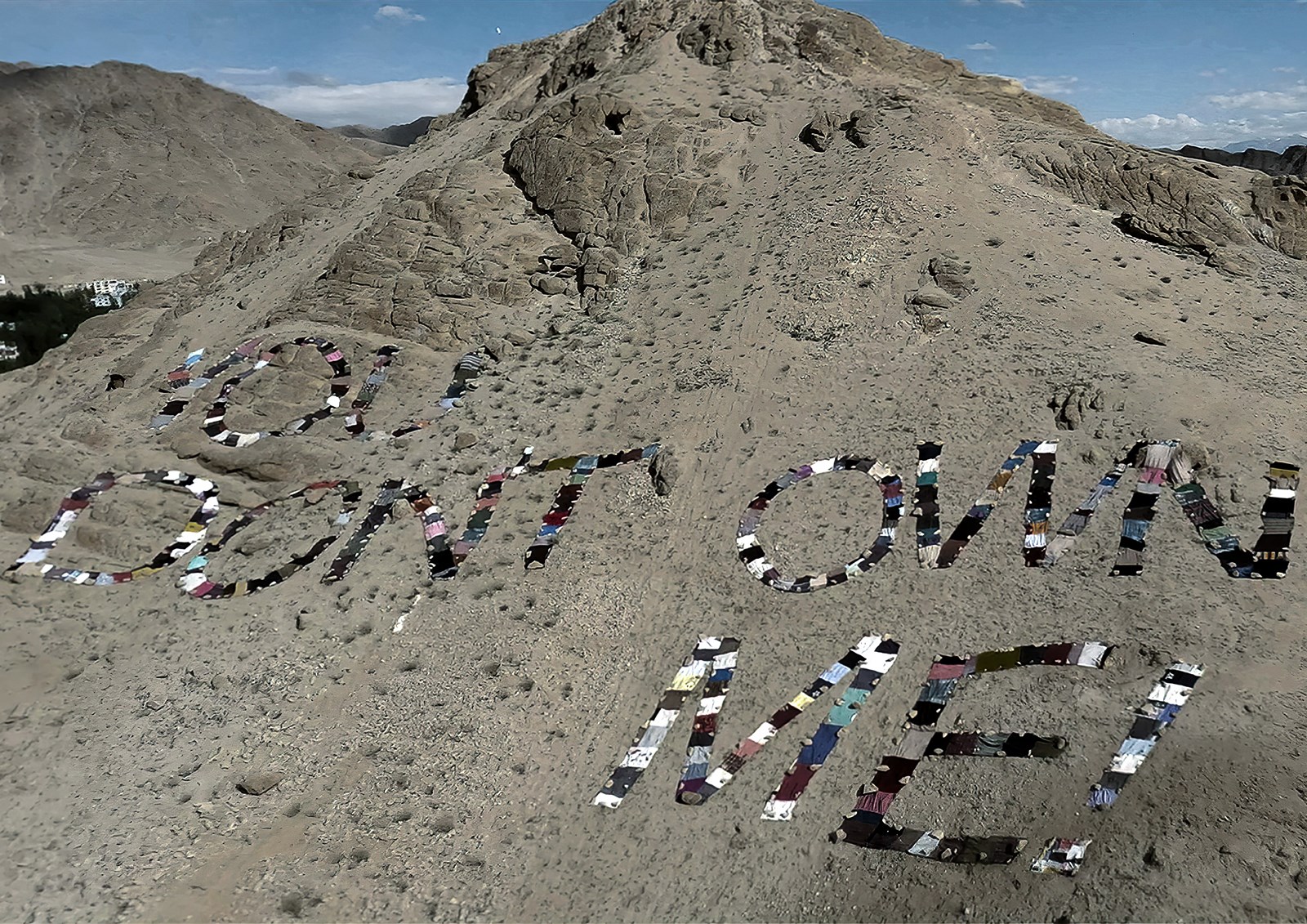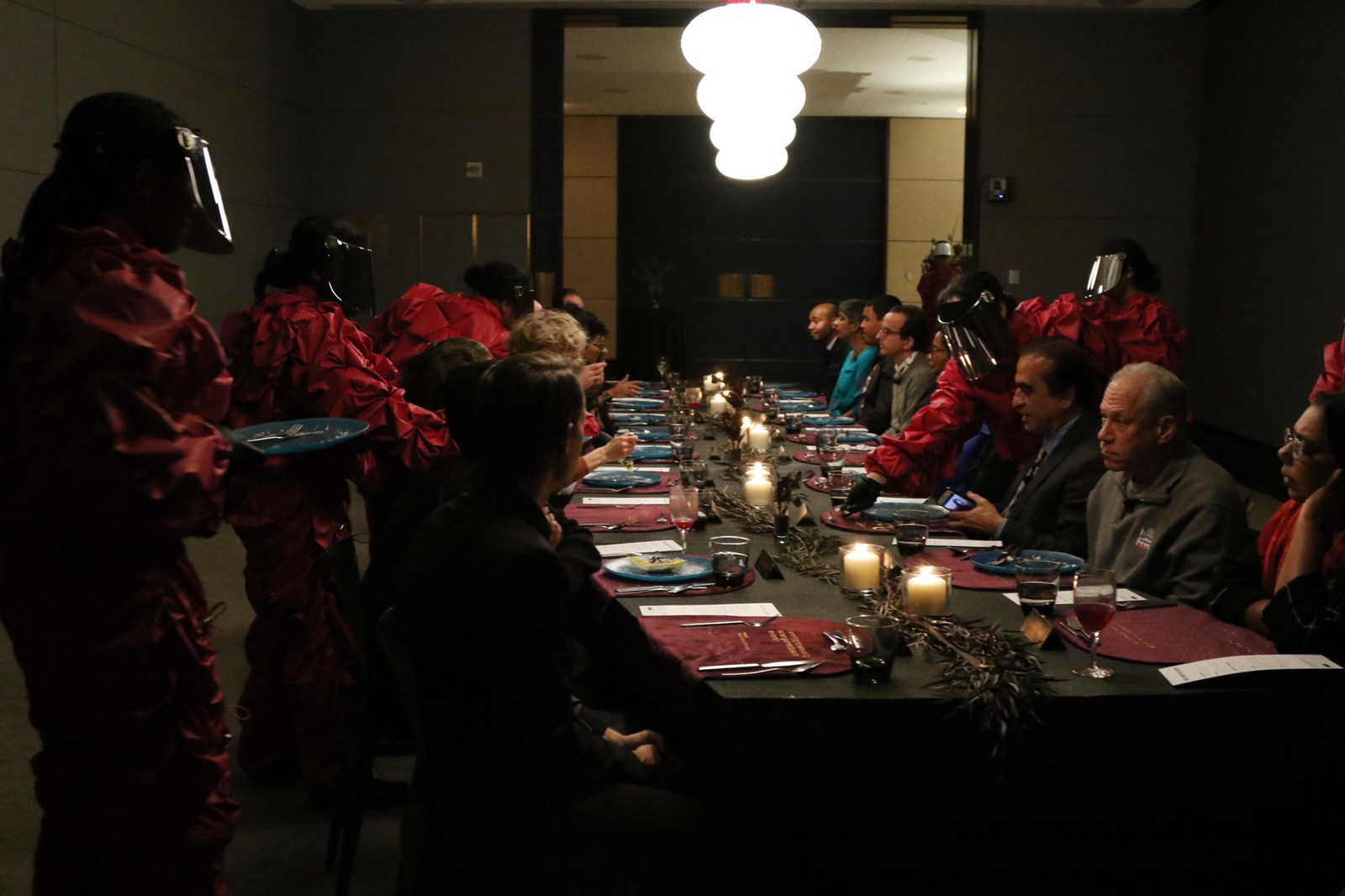Conceptual artist Vibha Galhotra’s multimedia practice addresses pertinent issues related to the environment and the fragile relationship between human beings and their ecosystem. Often requiring intense research and fieldwork, the Delhi-based artist’s compelling oeuvre has addressed multitude of concerns, from the critical state of the Yamuna river to sharing of natural resources and anthropogenic climate change. Excerpts from an interview
The ‘sa Ladakh’ festival aligns perfectly with my practice, merging art, environment, and community. Last year, I created You Don’t Own Me! using discarded clothes sourced from Local Futures (an NPO) and local residents. This work was an exploration of ownership, waste, and the human footprint on our environment. This year, I served as an advisor, contributing to the festival’s broader vision.
Land art has always allowed me to engage deeply with a site, to create something that resonates with the space, and then to let it go — a process that feels liberating for someone like me, who naturally resists the idea of hoarding or permanence.
My introduction to land art was rooted in Santiniketan’s expansive landscape, where the environment seemed to evolve with every season. The cultural richness of Baul music and Tagore’s poetry, along with influences from artists like Christo, Jeanne-Claude, and Andy Goldsworthy, shaped my early artistic exploration. KG Subramanyan’s guidance encouraged me to explore diverse forms, leading to personal experiments in printmaking, sculpture, installation, and land art. My 2006 exhibition, titled after Gauguin’s painting, “Where do We Come From? What are We? Where Are We Going?” marked the evolution of my multifaceted approach to art, which began in Santiniketan’s open spaces.
 You Dont Own Me! 18 x 65 feet, Site Specific, Found Material, Sa Ladakh, Ladakh, 2023
You Dont Own Me! 18 x 65 feet, Site Specific, Found Material, Sa Ladakh, Ladakh, 2023
Your ongoing exhibition “Climacteric Whispers” at Goodman Gallery in London has works inspired by Somnath Hore’s iconic “Wound” series. Could you talk about revisiting the series?
The exhibition spans 15 years of work, focusing on my environmental concerns. The Wounded series, inspired by Somnath Hore’s and somewhere Lucio Fontana’s work, is a key part of the exhibition. My connection to Hore’s work is deep and personal. I first met him while researching my dissertation on Indian printmakers. His white-on-white series, capturing the human misery of his time, resonated with me for its raw, yet sublime, portrayal of suffering. Hore generously taught me his technique, which I initially used in a piece called “Whirlpool” during my time in Santiniketan. After a period of exploring other mediums, I revisited this technique in 2019 while working on “Beyond the Blue,” which explores this absurd idea of interplanetary life, creating another race of inequality. Hore’s abstraction gave me a way to express the Earth’s scars — marks left by continuous environmental abuse.

 Sediment and other untitled. Sediment from River Yamuna on Board- 60 x 48 in 2012
Sediment and other untitled. Sediment from River Yamuna on Board- 60 x 48 in 2012
Several of your works draw attention to the plight of the Yamuna river, from Sediment (2012), which featured sludge from the river, to Majnu Ka Tila (2015) that depicts the city adjoining its filthy shores. When did you first consider discussing the predicament of the Yamuna through your work?
My engagement with the Yamuna began with an invitation to participate in a project aimed at cleaning the river. Though I had seen the Yamuna in passing, my first close encounter with its toxic reality was overwhelming. The river, once sacred, was now a symbol of environmental decay. This experience left an indelible mark on me, compelling me to create a dialogue through my art. Between 2009 and 2011, I spent a great deal of time documenting the river, speaking with the locals, and researching the interplay between politics, pollution, and spirituality.
The turning point came one Sunday morning when I witnessed a couple performing a ritual for their ancestors on the riverbanks, oblivious to the filth surrounding them. This moment crystallised the tension between belief and reality — a theme that runs through my work. The series “Sediments” (2011-12) emerged from this experience, where I used the black sludge from the river as a medium to confront the viewer with the stark truth of its condition. My work 365 Days (2015), which features water samples collected over a year alongside diary-like texts, further reflects on the evolving state of the Yamuna and our shifting relationship with it.
 Majnu Ka Tila, Nickel coated ghungroos, fabric, wood, PU, 52 x 178 x 2 in, Absur-City-Pity – Jackshainman Gallery, New York
Majnu Ka Tila, Nickel coated ghungroos, fabric, wood, PU, 52 x 178 x 2 in, Absur-City-Pity – Jackshainman Gallery, New York
Another recurring constant in your work has been the medium of ghungroos. What first attracted you to these?
My introduction to ghungroos was almost accidental. In 2007, while searching for a material that could capture the essence of urban chaos for my work Beehive, I stumbled upon ghungroos during a visit to a musical instrument store. At the time, I was also working with seeds, but their fragility posed challenges and a gallerist said it’s not commercially viable so we cannot show these works. Ghungroos, which I learned are inspired by the forms of seeds, offered a resilient alternative while still connecting to the natural world.
Over time, ghungroos became more than just a material; they transformed into a metaphor within my work. In pieces like Veils, Flow (2015), Colony Collapse Disorder (2012), ghungroos function as pixels in a larger tapestry, each one contributing to a greater image. The process of working entails the ‘de-construction’ of an image drawn, followed by a ‘constructed’ drawing, and further ‘re-construction’ by my studio assistants sewing ghungroos into intricate patterns. These take the form of pixels that come together to create an image.
 Who owns the water? Multidisciplinary Performative Participatory Dinner Project, New York 2019- Commissioned by Asia Society, New York
Who owns the water? Multidisciplinary Performative Participatory Dinner Project, New York 2019- Commissioned by Asia Society, New York
Your ongoing performative series Who Owns The Water? involves bringing together experts to highlight climate change with emphasis on water. If you could talk about its conceptualisation and iterations?
“Who Owns The Water?” was conceived during a Rockefeller residency at Bellagio in 2016. Surrounded by thinkers from diverse fields, I felt compelled to create a platform where these conversations could unfold in a visual and experiential/immersive manner. The concept was to curate a participatory dinner ceremony that would not only highlight the absurdity of our times but also encourage meaningful dialogue around water — a resource that is both essential and contested.
In New York, the dinner table was shaped like the Hudson River, with table mats that highlighted global water issues and a seating arrangement that fostered discussions on local concerns. Each dish served was a tribute to water, underscoring its role as a vital ingredient in our lives. The event was recorded to create a lasting documentation of the discussions.
In Jerusalem, the table design was inspired by the Jordan River, and the food was prepared by a Rescue Kitchen using local produce, once again turning the focus to the politics and distribution of water. Though we planned a similar event in Delhi, it was unfortunately postponed due to COVID. However, the land art project in 2017, where the words “Who Owns The Water?” were floated in the Yamuna, continuing to raise this critical question.
You were close to nature as a child. Did that also impact the direction of your art?
My father was in a transferable job and we were always in transit. He was a big nature lover and every weekend we would travel to a tranquil location depending on where he was posted. For instance, we would drive down to Rishikesh, Ponta sahib, and Hathnikund dam from Yamuna Nagar-Ambala to enjoy the farms around. We often organised picnics, where he would teach us about plants, flowering, pollination and much more. Those outings were definitely a starting point from where my love for nature developed as I look back now.

